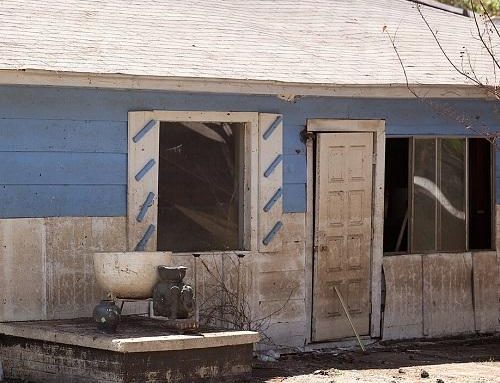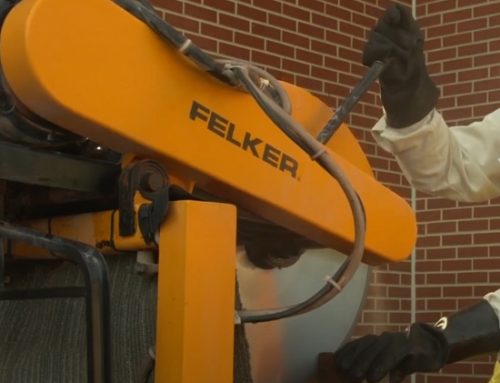The Importance of Preventing Slips, Trips, and Falls
As a society, we often take for granted the simple act of walking. But slips, trips, and falls can happen to anyone, anywhere, at any time. According to the National Safety Council (NSC), slips, trips and falls are the leading cause of workplace injuries and the second leading cause of accidental death. The Bureau of Labor Statistics reported that in 2019, slips, trips, and falls accounted for 24% of all nonfatal workplace injuries. The importance of preventing slips, trips, and falls cannot be overstated, especially in the workplace where they are a leading cause of injury.
Understanding the Risk Factors
Slips, trips, and falls can occur due to a variety of factors. Wet or oily surfaces, uneven surfaces, poor lighting, and obstructed walkways are common causes of slips. Trips can occur due to raised or uneven surfaces, electrical cords, and clutter on the floor. Falls can happen when working at heights, such as on ladders or scaffolding. It’s important to understand these risk factors in order to effectively prevent slips, trips, and falls in the workplace.
With a clear understanding of the risk factors that can lead to slips, trips, and falls, it’s important to take action to mitigate these hazards in the workplace. What follows next is a helpful guide to help reduce the risk of slips, trips, and falls in your workplace.
Conduct regular inspections of the workplace to identify hazards
Conducting regular inspections of the workplace is a crucial step in identifying hazards that can lead to slips, trips, and falls. These inspections should be conducted by a trained individual, who is familiar with the potential hazards and can recognize them in the workplace. The inspection should cover all areas of the workplace, including common areas such as hallways, stairways, and walkways, as well as specific areas where slips, trips and falls hazards are likely to occur such as near machinery and equipment, in storage areas, and near hazardous materials.
During the inspection, the inspector should look for hazards such as wet or oily surfaces, uneven surfaces, poor lighting, obstructed walkways, raised or uneven surfaces, electrical cords, and clutter on the floor. The inspector should also take note of any areas that are frequently used by employees and visitors, as they are more likely to be affected by slips, trips, and falls hazards. Once the inspection is complete, the inspector should document any hazards found and work with management to develop a plan to eliminate or control the hazards.
Regular inspections of the workplace can help to identify hazards before they cause accidents, and thus prevent injuries. This not only keeps the employees safe but also helps to reduce the costs associated with slip, trip and fall incidents. It is important to schedule regular inspections and follow up on any hazards identified to ensure that they are properly addressed. This will help to create a safer work environment for all employees and visitors.
Implement slip-resistant flooring and ensure walkways are clear of debris
One of the most effective ways to prevent slips, trips, and falls in the workplace is to implement slip-resistant flooring. Slip-resistant flooring is designed to provide a higher coefficient of friction, making it less likely for a person to slip or fall on the surface. There are different types of slip-resistant flooring, such as those made of rubber, vinyl, or concrete, that can be used in various settings, and it’s important to choose the right type of flooring for the specific environment.
In addition to implementing slip-resistant flooring, it’s important to ensure that walkways are clear of debris. Clutter on the floor, such as boxes, papers, or loose cables, can create tripping hazards and should be removed immediately. It’s also important to make sure that walkways are well lit and that any obstacles or changes in elevation are clearly marked. This will help to ensure that employees and visitors can safely navigate the workplace, reducing the risk of slips, trips, and falls.
It’s important to keep in mind that slip-resistant flooring and clear walkways are not a one-time solution, but rather a constant effort. Regular maintenance and cleaning are necessary to keep the flooring slip-resistant and walkways clear of debris. This includes regular cleaning, sweeping, and mopping of the flooring to remove any dirt, oil, or other materials that can make the surface slippery. Additionally, it’s important to address any potential hazards or changes in the workplace, such as spills or new equipment, as soon as they are identified, to minimize the risk of slips, trips, and falls.
Provide adequate lighting, including emergency lighting
Providing adequate lighting is an important aspect of preventing slips, trips, and falls in the workplace. Adequate lighting is essential for employees and visitors to be able to navigate the workplace safely and to recognize potential hazards. This includes not only the overall lighting level in the area, but also the distribution of light, which should be consistent and without shadows or glare.
In addition to general lighting, it’s also important to provide emergency lighting. Emergency lighting is essential in case of power outages or other emergency situations, to ensure that employees and visitors can safely evacuate the building. The emergency lighting should be placed in a way that it provides a clear path of egress, and it should be tested regularly to ensure that it is in proper working order.
It’s also important to consider the type of lighting that is used in the workplace. LED lights are energy-efficient and can provide a high level of lighting, while also reducing the heat output. This can be beneficial in areas where the temperature is critical such as in refrigerated areas or in areas where heat can be a hazard. Additionally, it’s important to make sure that the lighting is placed in a way that it does not create any glare or shadows that can create hazards.
In summary, providing adequate lighting is a crucial aspect of preventing slips, trips, and falls in the workplace. This includes not only providing general lighting but also emergency lighting, which is essential in case of power outages or other emergency situations. It’s important to regularly check the lighting levels, the distribution of light, and the type of lighting used, to ensure that it is appropriate and working properly. This will help to create a safer work environment for all employees and visitors.
Train employees on how to safely navigate the workplace and recognize hazards
Training employees on how to safely navigate the workplace and recognize hazards is an essential step in preventing slips, trips, and falls. This training should cover a variety of topics, including identifying common hazards, such as wet or oily surfaces, uneven surfaces, poor lighting, and obstructed walkways, as well as specific hazards that are unique to the workplace. It’s important to ensure that employees understand the importance of reporting hazards and incidents, and how to do so.
The training should also include the proper use of personal protective equipment (PPE), such as slip-resistant shoes, hard hats, and safety goggles, and any specific procedures that employees need to follow, such as how to safely use ladders or scaffolding. Additionally, it’s important to train employees on emergency procedures, such as how to evacuate the building safely in case of a fire or other emergency.
It’s also important to regularly review and update the training program to ensure that it is current and effective. This includes providing refresher training, especially after a significant change in the workplace, such as new equipment or layout changes. Additionally, it’s important to provide ongoing training and communication to employees, such as through safety bulletins or newsletters, to keep them informed of the latest hazards and best practices.
Training employees on how to safely navigate the workplace and recognize hazards is an essential step in preventing slips, trips, and falls. This includes not only providing training on identifying hazards but also providing training on emergency procedures, personal protective equipment and procedures that employees need to follow. It’s important to regularly review and update the training program to ensure that it is current and effective, this will help to create a safer work environment for all employees.
Use warning signs and barriers to alert employees and visitors of potential hazards
Using warning signs and barriers is an effective way to alert employees and visitors of potential hazards in the workplace and to prevent slips, trips, and falls. Warning signs can be used to indicate areas that are potentially hazardous, such as wet or oily floors, or areas that are under construction. These signs should be conspicuous and easily readable, and they should be placed in areas where they can be easily seen by employees and visitors.
Barriers can also be used to indicate potential hazards and to physically separate employees and visitors from the hazard. These barriers can be used to block off areas that are under construction, or to separate employees and visitors from hazardous materials or equipment. It’s important to ensure that the barriers are sturdy, and that they are placed in a way that they can’t be easily bypassed.
It’s also important to regularly inspect the warning signs and barriers to ensure that they are in good condition and that they are still needed. This includes checking that the signs are still legible and that the barriers are still in place and functional. If the signs or barriers are damaged or no longer needed, they should be repaired or removed immediately.
Using warning signs and barriers is an effective way to alert employees and visitors of potential hazards in the workplace and to prevent slips, trips, and falls. These signs and barriers should be conspicuous, easily readable and placed in areas where they can be easily seen by employees and visitors. Regular inspection of these signs and barriers is important to ensure that they are in good condition and that they are still needed, this will help to create a safer work environment for all employees and visitors.
Establish a reporting system for hazards and incidents
Establishing a reporting system for hazards and incidents is an important step in preventing slips, trips, and falls in the workplace. This system should allow employees and visitors to easily report hazards and incidents, such as slips, trips and falls, and should provide a clear process for how these reports are handled. This includes providing employees with multiple ways to report hazards, such as through a hotline, a web portal, or in-person reporting, and ensuring that the process is simple and easy to use.
When a hazard or incident is reported, it’s important to have a clear process for how it is handled. This includes assigning responsibility for investigating the report and determining the cause of the hazard or incident, as well as developing and implementing a plan to eliminate or control the hazard. This should be followed by a follow-up process to ensure that the hazard or incident has been effectively addressed, and that it is not likely to occur again in the future.
It’s also important to track and analyze the data on hazards and incidents, in order to identify trends and patterns that can be used to improve the overall safety of the workplace. This can help to identify problem areas and to target resources where they are needed most. Additionally, it’s important to communicate the outcome of the report and the actions taken to the employee who reported it and to all the employees, to ensure that everyone is aware of the hazards and how to avoid them.
Establishing a reporting system for hazards and incidents is an important step in preventing slips, trips, and falls in the workplace. This system should
Implement an emergency response plan
Implementing an emergency response plan is an essential step in preventing and managing slips, trips and falls incidents in the workplace. An emergency response plan is a set of procedures and protocols that are put in place to ensure that employees and visitors know what to do in the event of an emergency, such as a slip, trip or fall incident. It should include details on how to respond to the incident, who is responsible for taking action, and what resources are available.
The emergency response plan should be clearly communicated to all employees and visitors, and they should be trained on how to respond in the event of an emergency. This includes how to provide first aid if necessary, how to evacuate the building if necessary, and how to contact emergency services. The emergency response plan should also include procedures for reporting the incident, documenting it, and conducting an investigation to identify the cause.
It is also important to regularly practice and review the emergency response plan to ensure that it is up-to-date and that all employees are familiar with it. This includes conducting regular drills and exercises, so that employees know what to do in the event of an emergency and that they can respond quickly and efficiently. This will help to minimize the risk of injury and damage, and ensure that the incident is resolved as quickly as possible.
Implementing an emergency response plan is an essential step in preventing and managing slips, trips and falls incidents in the workplace. It’s important to clearly communicate the plan to all employees and visitors, and train them on how to respond in the event of an emergency. It’s also important to regularly practice and review the plan, to ensure that it is up-to-date and that all employees are familiar with it. This will help to minimize the risk of injury and damage, and ensure that the incident is resolved as quickly as possible.
Regularly review and update policies and procedures to ensure they are current and effective
Regularly reviewing and updating policies and procedures is an important step in preventing slips, trips and falls in the workplace. This includes reviewing and updating policies and procedures related to slips, trips and falls, such as those related to maintenance, housekeeping, and emergency response. It’s important to ensure that these policies and procedures are current and effective in addressing the hazards that may cause slips, trips and falls, and that they are consistent with industry best practices and regulations.
When reviewing and updating policies and procedures, it’s important to involve all relevant stakeholders, such as employees, management, and safety professionals. This will help to ensure that the policies and procedures are practical, effective and easy to understand for everyone. Additionally, it’s important to communicate any updates or changes to the policies and procedures to all employees and visitors, and to provide training on how to follow them.
It’s also important to monitor and evaluate the effectiveness of the policies and procedures. This includes tracking incidents and hazards, analyzing the data, and identifying patterns or trends. This information can be used to identify areas that need improvement and to develop strategies to address them. By regularly reviewing and updating policies and procedures, organizations can ensure that they are current and effective in preventing slips, trips and falls and to create a safer work environment for all.
Regularly reviewing and updating policies and procedures is an important step in preventing slips, trips and falls in the workplace. This includes involving all relevant stakeholders and communicating any updates or changes to the policies and procedures, it’s important to monitor and evaluate the effectiveness of the policies and procedures to ensure that they are current and effective in preventing slips, trips and falls. This will help to create a safer work environment for all.
Conclusion
Slips, trips and falls are a leading cause of injuries in the workplace and it’s crucial that organizations take steps to prevent them. The Hierarchy of Controls framework is a powerful tool for identifying and implementing effective controls to prevent slips, trips and falls. It’s important to use the most effective controls first, eliminate hazards where possible, substitute less hazardous materials or processes, engineer controls to reduce exposure, implement administrative controls, provide personal protective equipment, monitor and evaluate controls, and implement a combination of controls. By following these steps and regularly reviewing and updating policies and procedures, organizations can effectively control the risk of slips, trips and falls and create a safer work environment for all










